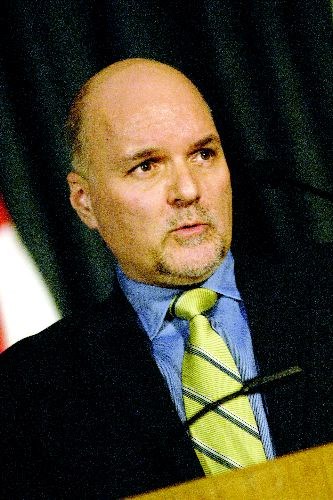A trio of forest industry executives roundly applauded the provincial government for helping their companies make forays into the Chinese market during the B.C. Natural Resources Forum and predicted the pace will continue for some time yet.
During a panel discussion Wednesday, Canfor sales and marketing senior vice president Wayne Guthrie said the effort to establish a market in China began 10 years ago when Victoria initiated an "exciting and landmark decision" to introduce woodframe home building.
"As it's turned out, after the collapse of the housing market and the sub-prime fiasco and everything else that has happened [in the United States] China has been a saviour," Guthrie said.
"From where we stand today, it's very clear that without that visionary market development that began back in 2002, and led by the B.C. government, the U.S. market collapse would've decimated our industry."
Chris McIver, West Fraser vice president of sales and corporate development and Hardy Wentzel Tolko, vice president of sales marketing and logistics also praised the government and then-Forests and Lands Minister Pat Bell for laying the groundwork.
Bell, now the Jobs, Tourism and Innovation Minister, took the compliments in stride.
"I'm not sure they aren't giving me more credit than I probably deserve," said Bell, the MLA for Prince George-Mackenzie. "It really is a concerted effort on the part of everyone in the industry. I happened to be fortunate enough to be the minister for forestry at the time we saw that big kind of incremental growth."
NDP MLA Doug Donaldson said it's good that northern B.C. now has that market but also noted that in his riding - Stikine - to the west, there's been an "exponential increase in raw log exports" and counted it as a factor in the demise of a sawmill in Kitwanga.
The executives discounted concerns about flagging Chinese demand for lumber.
During his presentation, Wentzel said markets along the country's north coast are accounting for most of the market and Tolko will be turning its focus to other regions comprising 450 million people but where woodframe construction has not been significantly introduced.
From about 45 per cent of its population today, the number of people living in urban areas is expected to rise to 70 per cent over the next 20 to 25 years, raising the number of cities in China with more than one million people to more than 200, Wentzel said.
"It looks promising for the B.C. forest industry that we have this great opportunity and the fact that it's been developed," Wentzel said.
McIvor had a similar comment.
"Yes, there may be slow growth in some areas, there may be bubbles in certain areas, [but] we're big believers that there is a very large market in China," McIvor said.
Asked about the possibility of a "supercycle" once the U.S. housing market recovers, Guthrie fell short of predicting lumber going for $500 per thousand board feet but did forecast that once starts south of the border reach one million a year, there will be a shortage of fibre.
The forum continues today at the Civic Centre.



